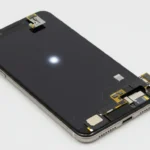Smartphone revolutionize communication, work and entertainment. But as we step deeper into the 2020s, the question isn’t just what’s next it’s what replaces the smartphone major tech companies are beginning to imagine a world where screens no longer dominate our attention. Instead, they envision smart, invisible, and deeply integrated technologies that change the way we live, work, and interact.
Explore how tech giants are shaping a future beyond smartphones through wearables, AI, ambient systems, and brain-machine interfaces offering a vision of a digital life that feels more natural and human than ever before.
From Pocket to Presence
Smartphones have become the center of our digital existence. But their dominance may be waning. Because even the most advanced smartphones still rely on screens that demand attention, isolate users, and disrupt face to face interaction.
Tech leaders now argue that the future is screenless, where computing power surrounds us instead of being held in our hands. This means shifting from device centric design to user-centric ecosystems, where the environment responds to you without needing constant input.
This is the vision tech giants are chasing a seamless digital fabric that serves you in the background.
Smart Glasses and AR Your Digital World
One of the most talked about technology in this new future is smart glasses. Unlike phones, smart glasses enable users to stay connected without taking their eyes off the real world. They provide directions, messages, and notifications through visual overlays right in your line of sight.
Companies are pouring resources into AR (augmented reality), which transforms how we access digital information. Imagine getting a recipe while cooking, reading a translation while traveling, or getting building data while walking through a city all without taking out a phone.
For tech giants, the value of AR glasses lies in blending the digital and physical worlds so seamlessly that using a screen feels outdated.
AI Powered Device
Artificial Intelligence is the real engine driving the move beyond smartphones. Instead of apps and icons, imagine interacting with a context-aware AI assistant that knows your routines, understands your voice, and even interprets your mood.
In this vision, your assistant doesn’t just answer questions it anticipates needs. It can adjust your calendar, recommend meals, remind you to take a break, or suggest a scenic route while driving. And it’s not confined to one device it lives in your glasses, your car, your home, or your smartwatch.
Tech companies are racing to develop AI first devices that don’t just respond to commands but become intelligent companions.
The Invisible Interface Ambient Computing
Ambient computing is all about surrounding users with helpful technology that’s invisible but intelligent. Instead of depending on one device (like a smartphone), the environment itself becomes interactive.
Your lights adjust automatically to your schedule. Your music follows you from room to room. This vision involves sensors, cloud computing, and AI working together to fade into the background while still delivering convenience.
Tech giants believe that when the interface disappears, the experience becomes magical.
Brain Machine Interfaces
The most ambitious future being explored is the brain computer interface (BCI). Imagine sending a message, browsing a website, or turning on a device using only your thoughts. It sounds like science fiction, but it’s closer than many think.
Early trials aim to help those with physical impairments. But long term, BCIs may offer a direct connection between mind and machine. While still in the experimental phase, this technology could one day bypass phones, screens, and even voice all replaced by intention alone.
For tech giants investing in neural technology, the goal is clear build a future where human intention becomes the interface.
| Technology | Interaction Style | Purpose | Current Status | Key Players |
|---|---|---|---|---|
| Smart Glasses + AR | Visual overlays, gestures | Real-world data access and navigation | Emerging, prototypes | Meta, Apple, Google |
| AI Assistants | Voice, predictive behavior | Personalized, proactive assistance | Widespread, improving | Amazon, Google, OpenAI |
| Ambient Computing | Passive, sensor-driven | Environment-aware automation | Growing infrastructure | Google Nest, Apple HomeKit |
| Brain-Machine Interface | Thought-based control | Hands-free interaction, accessibility | Experimental, clinical | Neuralink, Meta |
Why Tech Giants Want to Move On From Smartphone
The push beyond smartphones isn’t just about innovation for its own sake. Here are key motivations driving this shift:
- User Experience: Screens distract and divide attention. Emerging technologies aim to deliver more intuitive, human-centered experiences.
- Product Differentiation: With smartphones reaching a plateau, companies are seeking bold new product categories to lead the next tech era.
- Data Integration: Devices connected across environments allow more personalized and efficient data use, improving services and engagement.
- New Revenue Streams: From wearable subscriptions to cloud-based services, the post-smartphone world offers untapped business models.
It’s All Easy Challenge Ahead
Of course, this future isn’t without hurdles. Despite the excitement, several challenges remain:
- Privacy Risks: More sensors mean more data. Users may be wary of how much tech companies know about them.
- Affordability: Advanced wearables and smart environments can be expensive, limiting access to wealthy consumers at first.
- User Resistance: People are used to phones. New interfaces must offer enough value to change decades of habit.
- Infrastructure Needs: Ambient computing and AI depend on strong, consistent connectivity that isn’t available everywhere.
These concerns mean the future won’t arrive overnight but it’s clearly on the way.
The Transition Evolution, Not Replacement
Even as tech giants explore alternatives, smartphones aren’t disappearing instantly. Instead, we’re seeing an evolution. Phones may become smaller, smarter, and more modular connecting with glasses, watches, and voice systems to offer hybrid experiences.
Eventually, we may stop using the term “smartphone” altogether, as digital interaction becomes embedded in everything from clothes to buildings to furniture.
The smartphone era may not end suddenly, but it’s slowly being surrounded by a new, more seamless reality.
The End
The future that tech giants envision is bold, immersive, and deeply personal. Instead of a screen in your hand, you’ll live in a world where technology is everywhere but nowhere to be seen. You’ll speak, gesture, move, and think and your environment will respond. This isn’t just about replacing one device with another. It’s about rethinking digital life itself making it more human, more intuitive, and more connected to the world around us.






